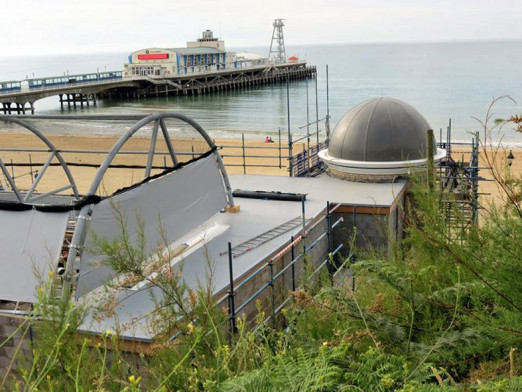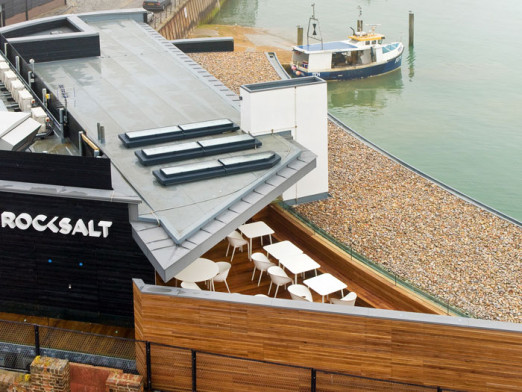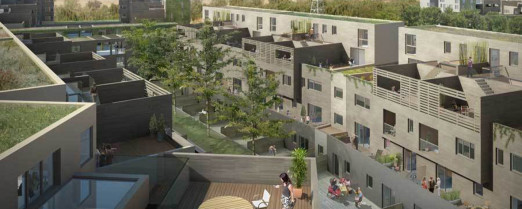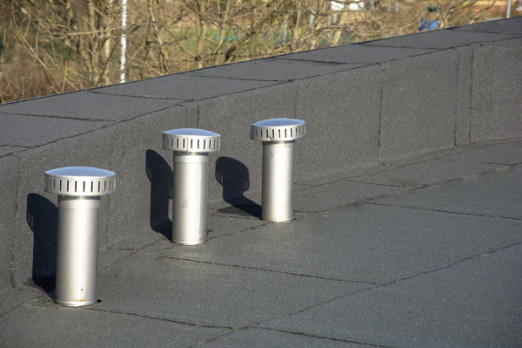SIG Design & Technology look at intrusive surveys, what they are and why you should consider having one on your flat roof.
If you or your client are at all concerned about the condition of an existing flat roof, if it is leaking, if the roof coverings are coming to the end of their working life, or if you need to improve or upgrade your roof or the equipment housed on it, a roof survey is a valuable first step.
A professional roof survey from SIG Design and Technology is free, it can help you decide on how to deal with an existing roof, manage existing leaks and prevent future ones, and help you futureproof your roofs with improved drainage and insulation.
What is an Intrusive Flat Roof Survey?
An Intrusive Flat Roof Survey is a comprehensive survey of a flat roof which includes cutting into the roof build up, opening up the layers to inspect them.
Why would you need an Intrusive Flat Roof Survey?
A great deal can be learned from a visual inspection of a flat roof, but there are a number of reasons why your client may need an intrusive roof survey. These include:
- Lack of information about the roof build up. It isn’t uncommon for the building’s Operation and Maintenance Manual to have gone missing or be incomplete. In this case you can’t find out what is there, without disturbing the layers.
- If the roof is leaking or leaks are suspected, without an intrusive survey the condition of the layers cannot be determined. For example, an intrusive survey allows you to inspect insulation to confirm whether it has been waterlogged, and to determine the condition of the deck below.
- If the roof has been repaired in the past, an intrusive inspection can evaluate the success of the repairs and the types of material involved. In some cases, incompatible materials may cause additional problems, and a survey will determine what needs to be done.
- If the roof is to be upgraded, for example to fit additional insulation, knowing the type and condition of the insulation will ensure the upgrade will perform as planned. An interstitial condensation risk analysis is essential in the case of an upgrade, and an intrusive survey will ensure it is accurate.
- If the roofing membrane is coming to the end of its natural life, an intrusive survey confirming the build-up and condition can ensure the most cost-effective overlay or roof replacement is designed.
Ensure a Professional Survey is Carried Out
By its nature, an intrusive roof survey involves interfering with the waterproofing of the roof. For this reason, it should not be carried out lightly, or without preparation and skill, but should be carried out by trained staff from a reputable company. With decades of experience in flat roofing and the backup of our parent company SIG Plc (a FTSE 250 listed company), you can be assured that the team at SIG Design and Technology has the necessary experience.
What happens on an Intrusive Flat Roof Survey?
- One or more of our professional field technicians will attend site to carry out the survey.
- A risk assessment is always carried out beforehand, and the contractor is always responsible for providing safe access to the roof. We can recommend a contractor if required.
- A full visual study of the roof areas is made, together with a photographic record.
- The technicians aim to understand how the roof was installed in the first place, and the life of the roof since. Many roofs become a repository for various plant and equipment, some of which is retrofitted and upgraded over time.
- As well as inspecting the roof surface and materials, they will check upstands, abutments, outlets, gutters and drainage, rooflights, plant and other features including any existing repairs or overlays. They will also check the existing roof falls are adequate and in line with British Standards.
- The technicians will identify other items on the roof that will need upgrading beyond the finish itself. This can include rooflights, glazing, plant, access ladders and walkways, lightning conductors, safety equipment and tapered insulation to areas with insufficient falls, for example.
- The field technicians determine whether intrusive survey techniques are required and where these investigations are to be carried out.
- After the survey is complete, it is written up into a photographic report with recommendations.
About Core Samples
As part of the survey process the technicians may take some core samples on various areas of the roof. “Taking a core sample” is the process of cutting out a small section of the roof to expose the different layers back to the deck. Intrusive techniques such as core samples should not be carried out if the roof is still under warranty, as this may invalidate the warranty.
Core Samples are taken to
- identify the roof build up and the type of deck,
- confirm the condition of the materials and identify which (if any) need replacing, and
- test for moisture in the roof, identifying both leaks and potential interstitial condensation (where moisture vapour condenses inside the roof fabric, leaking back into the building).
A technician will take several core samples across your roofs, in areas which will indicate in his or her experience, the state of the roof as a whole. For example, the technician may take core samples at high (ridge) and low (eaves) points in the roof, to determine if any insulation installed is flat or tapered. The core samples will be cut to avoid any potential ponding areas, and areas which appear to contain weak or damaged materials. This is to ensure that repairs to seal the core sample areas can be made effectively, returning your roof to its pre-survey state.
Results of an Intrusive Flat Roof Survey
On completion of the survey, our technicians will compile the results into a written report with photography and commentary, together with recommendations. A good roof survey will provide you with the information you need to make decisions on the future life of your flat roofs.
Next Steps After your Intrusive Flat Roof Survey
Following the survey report we can provide a full design and specification service to enable you and your client to take the necessary next steps. We also provide impartial roof product advice, we have a countrywide accredited roofing contractor network and we monitor installations, provide full guarantees and advise on planned maintenance.
This is all part of our unique ‘8 Steps to a Perfect Roof’ service which is provided free to our clients.
SIG Design & Technology provide our comprehensive roof surveys for free, including any recommendations and specifications. This is not only because we are confident in the value of a comprehensive roof survey, but it also allows us to manage the roof design process, the on-site process, and the product selection at no additional charge. This means that we can provide our customers with genuine, quality guarantees. We take the risk, so you don’t have to.






